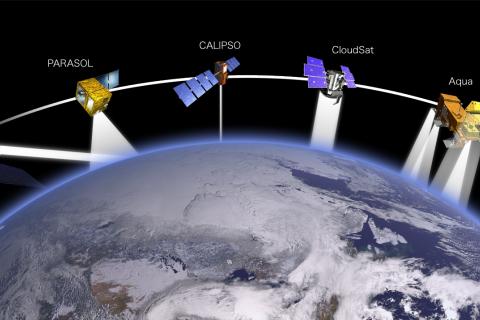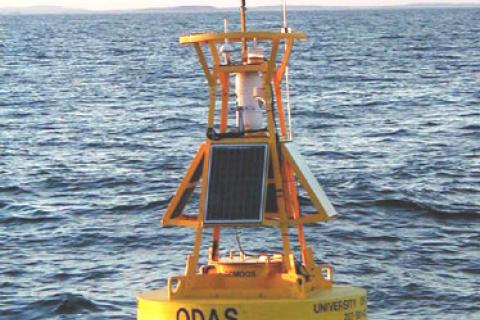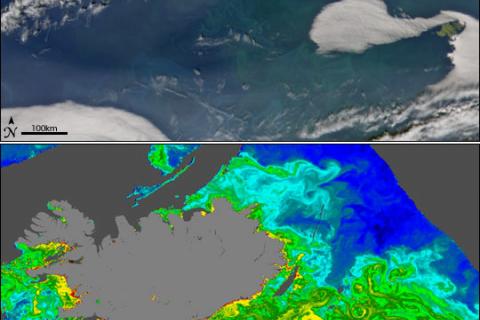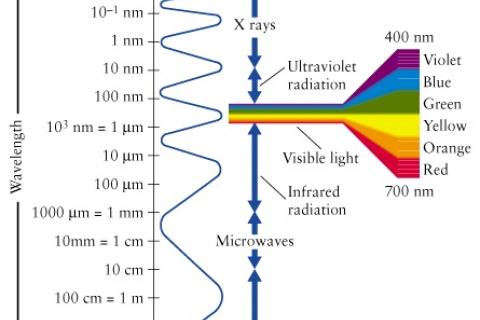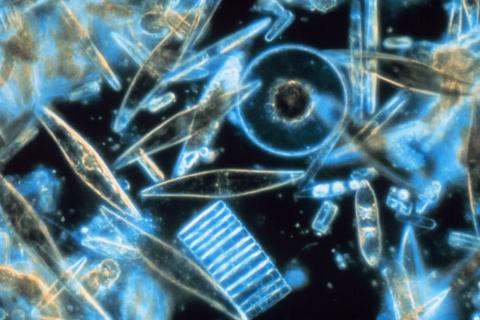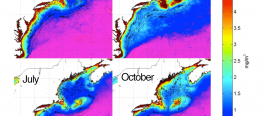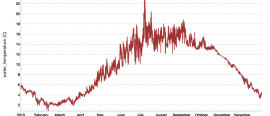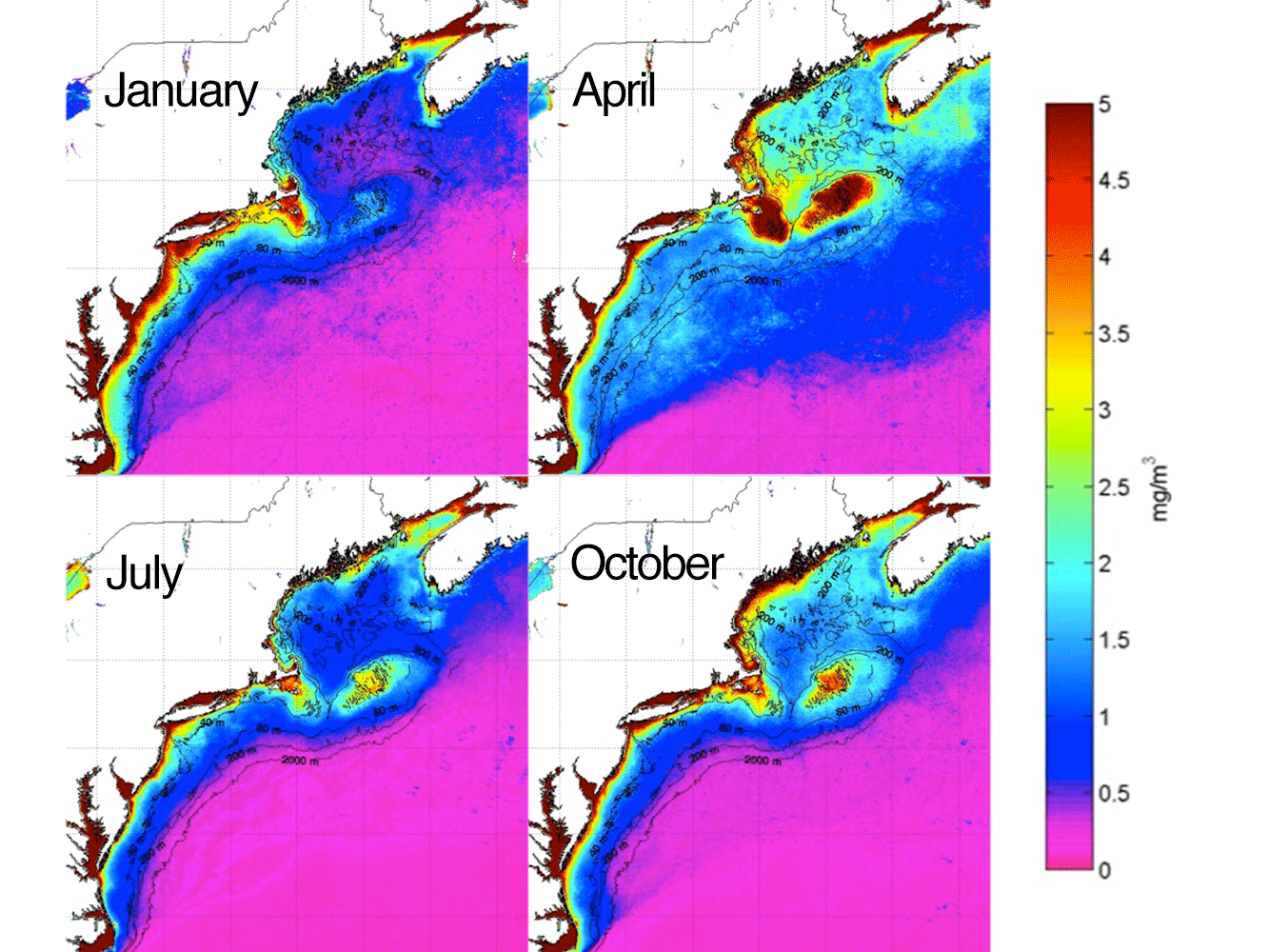Questioning Ocean Productivity and Temperature
Introduction
Remotely sensing systems, such as satellites and remote buoys, allow us to collect data about the ocean without experiencing seasickness and/or the overwhelming costs of sending out a research vessel. The information collected using this technology can be used in many ways, from disaster management to weather monitoring to locating optimal fishing zones. More specifically, satellites and buoys can be used together to gain information on the primary productivity and temperature of the ocean.
Water temperature and primary productivity are of great importance to both scientists and non-scientist alike. Primary producers in the ocean (i.e. phytoplankton) produce huge amounts of oxygen on Earth, play a major role in the Carbon Cycle and are a fundamental link in the aquatic food web. Likewise, ocean temperature is not only important to those of us who want to go swimming but also play a role in the ocean through its effect on density and ocean circulation. Because these two factors are so important, it is important that we monitor how they change over time and what causes these changes.
Background
Ocean color is a satellite measure of how much chlorophyll is in the ocean. Since chlorophyll is a photosynthetic pigment found in primary producers like phytoplankton, scientists use this an indicator of the amount of primary production in the ocean. The data collected by satellites on ocean color are often converted to a false color map. False color maps are created as a visual tool to observe patterns and differences within the data collected. These maps are not in true-life color nor are they photographs/pictures.
Satellites are also used to measure Sea Surface Temperature (SST). The satellites record the infrared radiation from the ocean surface in several different wavelengths to get the temperature. Like chlorophyll, this data is also presented as a false color map.
Along with satellite data, scientists also rely on data collected by buoys in the water to gather information. The National Data Buoy Center (NDBC), an agency within the National Weather Service (NWS) of the National Oceanic and Atmospheric Administration (NOAA), has deployed over 100 buoys off the coast of the United States. These buoys continuously measure atmospheric and oceanic properties, including water temperature, at a fixed location.
Question 1: What oceanographic questions could you ask using the data collected by satellites and buoys?
Challenge
In this activity you will investigate the following research challenge...
In this activity, you will look at seven year composites for January, April, July, and October of Sea Surface Temperature (SST) and Ocean Color (chlorophyll concentrations) in the Mid-Atlantic Bight region. Each month was chosen to represent a season. You will also investigate data collected by buoys in three different locations. Use this data as a basis to develop a question(s) and a hypothesis for this question.
Explore the Data
Explore the primary production and water temperature to develop a question(s) relating temperature and primary production in the ocean. Investigate each piece of evidence and think about the investigation prompts on each page. After viewing all of the data, continue to the Explanation page for instructions on how to complete the Challenge.
When you're done investigating each dataset, continue to the last section.
Seasonal Chlorophyll Concentrations
These satellite images show the concentration of chlorophyll during 4 different months of the year.
Interpretation Questions
- What conclusions do you draw from this data?
- What question(s) do you have that these data could help to help answer?
Seasonal Sea Surface Temperature
These satellite images show the temperature at the sea surface during 4 different months of the year.
Interpretation Questions
- What conclusions do you draw from this data?
- What question(s) do you have that these data could help to help answer?
Water Temperatures Off the Coast of FL, NJ & ME
The interactive above allows you to investigate water temperature measured at NOAA buoys deployed off the coast of Florida (41112), New Jersey (44065), and Maine (44033). Use the interactive to investigate the water temperature data throughout 2013.
Interpretation Questions
- What conclusions do you draw from this data?
- What question(s) do you have that these data could help to help answer?
Develop an Explanation
Recall that the research challenge you are trying to address is:
In this activity, you will look at seven year composites for January, April, July, and October of Sea Surface Temperature (SST) and Ocean Color (chlorophyll concentrations) in the Mid-Atlantic Bight region. Each month was chosen to represent a season. You will also investigate data collected by buoys in three different locations. Use this data as a basis to develop a question(s) and a hypothesis for this question.
As you consider the data you just investigated, consider the following questions:
- What did you observe about ocean primary productivity and temperature?
- What questions do you have that these data can help answer?
- What additional evidence would you need to answer your question(s)?
Assessment
Additional Instructions
Using the datasets provided, come up with question(s) and a hypothesis related to primary production and water temperature data provided. Make sure to identify the evidence you used throughout your process of question development and hypothesis formation.
